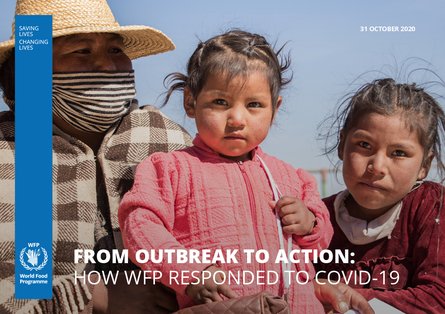
COVID-19 is the worst crisis the world has faced since World War II. The impacts of the pandemic were felt worldwide, in developed and developing countries alike. While conflict and insecurity remain the main drivers of hunger, the added dimension of COVID-19 exacerbated the ability of affected communities to cope, causing a drastic reduction in livelihood opportunities, employment and income - pushing many communities already on the brink further into desperate circumstances. In April 2020, the United Nations World Food Programme (WFP) estimated that if no action was taken 270 million people would become acutely food insecure in the countries in which it works; an increase of 82 percent on the figures prior to the pandemic.
Following the World Health Organization’s declaration of the pandemic in March, WFP, with critical support from donors, stepped up with a global platform of activities to mitigate the impact of this unparalleled disaster and support those at risk of being left even further behind. In close cooperation with its partners, WFP set out a strategy to:
• Sustain ongoing levels of assistance to beneficiaries across all WFP operations;
• Scale up to reach additional beneficiaries on the brink of acute food insecurity due to COVID-19 and its compounded impacts;
• Support governments to respond to growing needs through the provision of technical assistance, tangible assets and services;
• Enable the humanitarian and health response through the WFP Common Services, ensuring the critical movement of personnel and COVID-19 cargo despite supply chain disruptions caused by the pandemic. For WFP, responding to emergencies – whatever their cause or location – is second nature. COVID-19, however, has been an emergency on an unprecedented global scale. WFP has continued to demonstrate why it is a leader in emergency response, both continuing to serve its own beneficiaries while empowering the humanitarian and health community to respond to the global emergency.